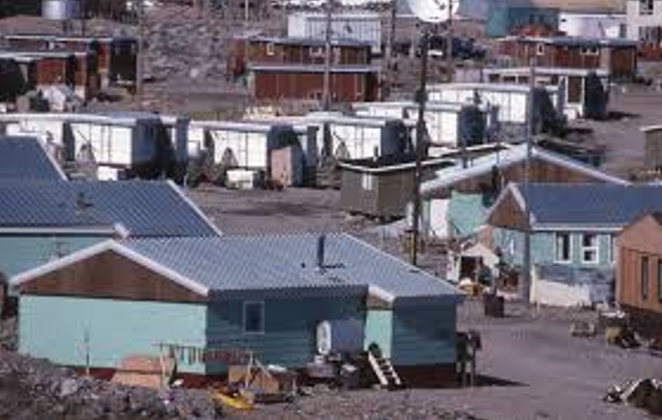4.4.4 Inuit Housing

The majority of Inuit people (73%) live in the Inuit Nunangat (Inuit homeland). This is made up of Nunavut, Nunavik (Northern Quebec), Nunatsiavut (Labrador), and Inuvialuit (Northwest Territories).1 It is reported that 39% of Inuit people in Inuit Nunangat live in crowded homes2, 33% of the homes are in need of major repair, and 33% are in core housing need.3 Inuit people are 10 times more likely to live in crowded homes and 5 times more likely to live in homes in need of major repair than non-Indigenous people.
Many Inuit families live in social housing. It is estimated that 15% of Nunavut’s population is waiting for public housing, and over 3,000 homes are needed to meet the need.4
These housing conditions contribute to many health and social issues for Inuit children and youth – including increased rates of infectious and respiratory illnesses, e.g., the rates of tuberculosis are 400 times higher than those of non-Indigenous Canadians;5 Inuit children living in Nunavut have the highest known rates of RSV bronchiolitis requiring hospitalization – 484 per 1000 infants in the first year of life (versus 27 per 1000 infants in temperate Canada and the United States);6 and Inuit people are particularly over-represented in flu pandemics.7
1Statistics Canada. (2011). Aboriginal peoples in Canada: First Nations people, Métis and Inuit. Ottawa, ON: Statistics Canada, Catalogue no. 99-011-X2011001.
2Statistics Canada. (2015). Aboriginal statistics at a glance: 2nd Edition. Ottawa, ON: Statistics Canada, Catalogue no. 89-645- x2015001.
3Canada Mortgage and Housing Corporation. [CMHC]. (2015). 2011 Census/National Household Survey Housing conditions series: Issue 5- Inuit Households in Canada.
4Knotsch, C., & Kinnon, D. (2011). If not now … when? Addressing the ongoing Inuit housing crisis in Canada. Ottawa, ON: National Aboriginal Health Organization.
5Public Health Agency of Canada [PHAC]. (2014). Tuberculosis prevention and control in Canada: A federal framework for action.
6Kovesi, T. (2012).Respiratory disease in Canadian First Nations and Inuit children. Paediatrics & Child Health, 17(7):376-380.
7National Collaborating Centre for Aboriginal Health (2016). The 2009 H1N1 influenza pandemic among First Nations, Inuit and Métis peoples in Canada: Epidemiolog y and gaps in knowledge. Prince George, BC: National Collaborating Centre for Aboriginal Health.
